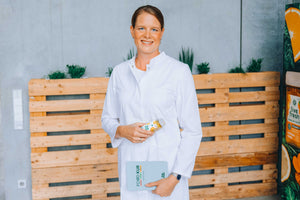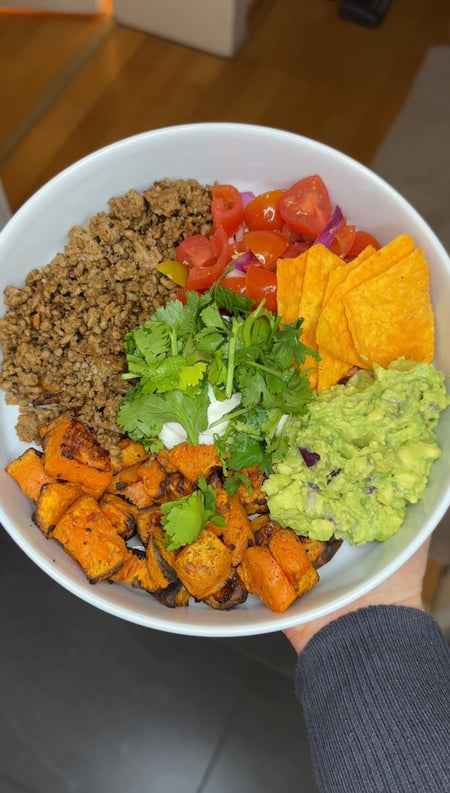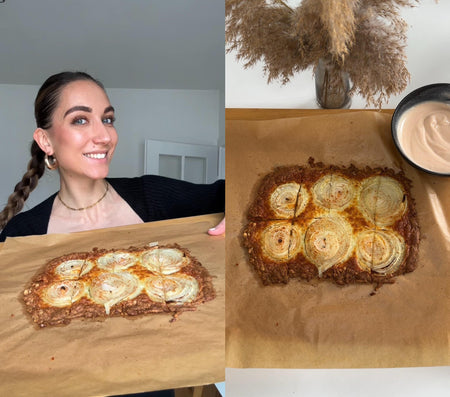Die Curcuma Pflanze ist mehr als nur ein Gewürzlieferant. Sie ist ein echter Allrounder: dekorativ, vielseitig einsetzbar und inzwischen auch bei uns als Zimmer- oder Balkonpflanze richtig beliebt. Ob auf der Fensterbank, im Garten oder als Hingucker im Wohnzimmer – Curcuma bringt Farbe und ein bisschen tropisches Flair in Dein Zuhause. Wer tropische Pflanzen liebt, wird von dieser Art begeistert sein.
Highlights
- Die Curcuma Pflanze (Curcuma longa) ist dekorativ, tropisch und ideal als Zimmer- oder Balkonpflanze.
- Die Curcuma Pflanze in der Wohnung liebt helle, warme Plätze ohne direkte Mittagssonne und bringt exotisches Flair ins Zuhause.
- Die Curcuma Pflanze Pflege ist unkompliziert: regelmäßig gießen (ohne Staunässe), höhere Luftfeuchtigkeit & Ruhephase ab Spätsommer beachten.
- Die Curcuma Pflanze draußen gedeiht ab 15 °C im Garten oder auf dem Balkon, sollte aber vor Kälte & starkem Regen geschützt werden.
- Ihr Rhizom enthält Curcumin, bekannt für seine intensiv gelbe Farbe und mögliche entzündungshemmende Wirkung* – ideal für Küche & Gesundheit.
What is the curcuma plant?
The turmeric plant, botanically Curcuma longabelongs to the ginger family. It originates from South Asia, where it has been cultivated for centuries. At its center is the so-called Rhizomea tuberous root known as turmeric when dried and ground - a deep yellow spice that is an indispensable part of any curry mix.
But turmeric can also really make a statement as a plant itself: With its large, green leaves and the eye-catching Blossomsusually in pink or white, it is a real eye-catcher - both in the house and in the garden. And turmeric even has some healthy advantageswhich you can then use directly.
Curcuma plant in the home - a tropical eye-catcher for the home
The curcuma plant in the home is not only decorative, but also easy to care for. It feels most at home in a bright, warm location without direct midday sun. It provides fresh, green accents, particularly in modern interiors or bright living spaces - almost all year round.
In summer, you can also grow the plant on the Balcony place. It loves temperatures from 18 °C and is happy to have some fresh air - the main thing is that it doesn't get too cool.
Curcuma plant care - it's that simple
You don't need green fingers to look after these plants. With a few simple tips, they will stay beautiful for a long time:
- Location: Bright place without direct sunlight
- Pouring: Regularly, but avoid waterlogging
- Humidity: Slightly higher - regular spraying is ideal
- Resting phase: After the Flowering time - mostly from august - the plant retreats. It is then watered less and the leaves are allowed to retract.
In spring, you can then put them back into fresh soil - often from your own garden. Rhizomethat has developed over the winter. This way you can enjoy the plant every year anew. The Flowering time is a real highlight every year and - depending on the care - can be truly spectacular.
Curcuma plant outside - also possible in the garden?
Yes, it is absolutely possible to keep the curcuma plant outdoors - ideally in a pot on the balcony or directly in the garden. Garden. It is important that it is protected from the cold and does not get too much rain. As soon as the temperatures are permanently above 15 °C, it can go outside.
In late summer - usually from August - the plant begins to wilt, which is completely normal. Then its dormant phase begins - a natural cycle that many tropical plants go through. The Rhizomes continue to develop during this time and sprout new shoots in spring.
What is in the plant?
The exciting thing about this plant is not only its appearance, but above all what grows under the soil: the yellow root. This contains Curcumina secondary plant substance that is responsible for the intense color.
Curcumin is often used in connection with Inflammatory processes* and can be found in many recipes and spice blends. Especially in combination with Ginger creates a popular mixture that is frequently used both in the kitchen and in herbal products. Incidentally, ginger also belongs to the Zingiberaceae family, to which Curcuma longa counts - a real power duo in nature! Read more here: The superfood ginger & turmeric - 8 facts and Superfood turmeric-ginger shot: recipe & effect
With our Kurkuma Power you absorb 88 mg of curcumin per shot and support your body in controlling inflammatory reactions*.
If you prefer to incorporate turmeric into your meals, you can find the delicious Turmeric curry or even simple Recipes to cook yourself.
Conclusion: Curcuma - more than just a spice
Whether as a decorative houseplant, in the garden or on the balcony - the curcuma plant is versatile, easy to care for and offers an exciting new experience of nature every year. With its eye-catching leaves and flowers, it brings tropical flair directly into your home.
*Curcumin helps to control the inflammatory processes in the body.
FAQ about the curcuma plant - care, location & interesting facts
What exactly is the curcuma plant?
Curcuma, also known as turmeric, belongs to the ginger family. The plant originally comes from South Asia and is known for its bright yellow rhizome - the root from which the spice turmeric is extracted. But it also makes quite a statement as a houseplant - with eye-catching leaves and exotic flowers.
Can I also keep curcuma as a houseplant?
Yes, absolutely! Curcuma is a great houseplant that thrives particularly well in bright rooms with indirect light. It brings a tropical flair to your home and is a real eye-catcher with its colorful flowers.
How do I look after the curcuma plant properly?
Don't worry, it's pretty easy to care for:
- Location: Bright space, but no blazing midday sun
- Pouring: Keep evenly moist, but avoid waterlogging
- Humidity: A little more if you like - regular spraying helps
- Rest period: From late summer it retreats - less watering, leaves are allowed to retract
Does Curcuma flower every year?
Yes, with the right care you can look forward to flowering every year. After the dormant phase, the rhizome sprouts again in spring - and with a little patience, the next flower will follow.
Can I keep the curcuma plant outside?
Yes, but only in warm temperatures. From around 15 °C it can go out on the balcony or in the garden - preferably in a pot. Important: Protect from the cold and too much rain! The dormant period begins in late summer, when it can be brought back inside.
What happens during the rest phase?
The plant is retreating - this can be seen from the wilting of the leaves. This is completely normal! During this time, the rhizome continues to develop. The plant can then sprout again in spring.
What is in the root of turmeric?
The root - i.e. the rhizome - contains curcumin, a natural pigment that is responsible for the intense yellow coloration. Curcumin is often associated with supporting inflammatory processes* and is a popular ingredient in spice blends, shots and herbal products.
Is turmeric edible if I grow it myself?
Yes, if you grow the rhizome, you can harvest it later and use it like standard turmeric - either freshly grated or dried and ground. It is important that the plant is unsprayed and grown in good soil.
Do you have any products with turmeric?
Sure, for example our Kurkuma Power Shot with 88 mg curcumin per portion - practical, tasty and perfect for on the go. Or our Turmeric curry for the kitchen - natural, versatile and super easy to prepare.
Das könnte dich auch interessieren

Dr. Ulrike Fischer
Nutritionist
Developed on a scientific basis by Dr. Ulrike Fischer, who holds a doctorate in nutritional science.
Die Curcuma Pflanze ist mehr als nur ein Gewürzlieferant. Sie ist ein echter Allrounder: dekorativ, vielseitig einsetzbar und inzwischen auch bei uns als Zimmer- oder Balkonpflanze richtig beliebt. Ob auf der Fensterbank, im Garten oder als Hingucker im Wohnzimmer – Curcuma bringt Farbe und ein bisschen tropisches Flair in Dein Zuhause. Wer tropische Pflanzen liebt, wird von dieser Art begeistert sein.
Highlights
- Die Curcuma Pflanze (Curcuma longa) ist dekorativ, tropisch und ideal als Zimmer- oder Balkonpflanze.
- Die Curcuma Pflanze in der Wohnung liebt helle, warme Plätze ohne direkte Mittagssonne und bringt exotisches Flair ins Zuhause.
- Die Curcuma Pflanze Pflege ist unkompliziert: regelmäßig gießen (ohne Staunässe), höhere Luftfeuchtigkeit & Ruhephase ab Spätsommer beachten.
- Die Curcuma Pflanze draußen gedeiht ab 15 °C im Garten oder auf dem Balkon, sollte aber vor Kälte & starkem Regen geschützt werden.
- Ihr Rhizom enthält Curcumin, bekannt für seine intensiv gelbe Farbe und mögliche entzündungshemmende Wirkung* – ideal für Küche & Gesundheit.
Inhalt







